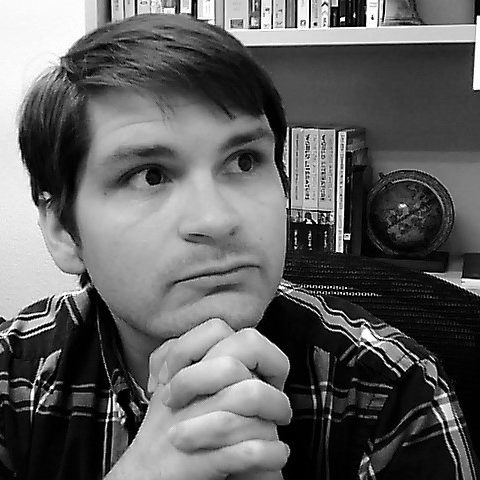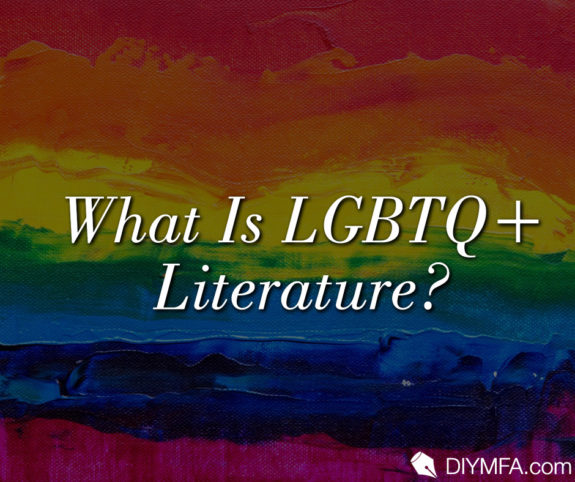[Author’s note: This is the first article in my new column series about LGBTQ+ writing called “LGBTQ+ Lit and Craft”. It addresses a diverse array of issues related to reading and writing LGBTQ+ literature across the genres.]
Defining LGBTQ+ Literature
LGBTQ+ literature, especially young adult fiction, has boomed in popularity. But what is LGBTQ+ literature? How can we define something that spans all genres, modes, styles, and ages?
In 2019, I published a book titled From A Whisper to A Riot: The Gay Writers Who Crafted an American Literature Tradition. After years of research, reading dozens upon dozens of LGBTQ+ works by LGBTQ+ writers, I came up with four common traits that help us truly understand how to read—and write—LGBTQ+ stories. Those traits are: Setting; Engaging with Stereotypes; Coded Communication; and Issues of Gender & Sexuality.
It’s a good idea for writers to know their history and for columnists to be transparent about the way they approach their topics. Since my future columns might address one or more of these four concerns, and because I believe an interest in LGBTQ+ literature should be grounded in textual and cultural awareness, I want to take this opportunity to outline these four concepts.
Setting: Time and Place
An important feature for LGBTQ+ texts that were written and published in the U.S. before the Stonewall Riots of 1969—and related legal judgements surrounding “obscene” publications—was that the stories were often set in locations that allowed the reader to “distance” herself from it. This physical distance between the reader and the story provided some psychological comfort in that it invited the reader to witness a kind of story that “couldn’t happen here,” and so it was unthreatening.
Similarly, LGBTQ+ writers created that same sense of distance by writing stories that took place in earlier time periods. This includes mid-century novels that took place before World War I, for example, or those that were set in the Renaissance or in Ancient Greece. Just as physical distance created a kind of spatial buffer between the reader and the provocative plot, so too did temporal distance. A reader could enjoy the story, even discuss it with friends, because its contents took place in a time long gone.
Today, writers of LGBTQ+ fiction often use the same devices, distancing their story by time or place. They manifest in new ways, however, such as writers who look back on the times of shock “therapy” to “cure” homosexuality, or who revisit the AIDS crisis, or who write about what it was like for a queer kid growing up in the rural south to finally move to a big city up north. In effect, LGBTQ+ writers are still very much interested in where and when their stories take place and continue to make these an important part of the genre.
Engaging with LGBTQ+ Stereotypes
An unfortunate and harmful aspect of LGBTQ+ literature is its penchant for enabling and creating stereotypes. These range from what it means to be gay, what homosexuals look or act like, and even what is likely to happen to a gay person—a shared fate. In a disturbing number of LGBTQ+ texts, for example, the gay male character, whether he is the main character or a supporting one, ends up dead, usually by committing suicide or, post-AIDS crisis, of disease. When we think of literature as a socio-cultural conversation, this repeated imagery has seriously painful consequences.
Fortunately, some of the historical texts, those written before Stonewall, offer alternative perspectives, many of them even falling into that “happily ever after” trope. It’s refreshing to see texts written as early as the 1920s offering their gay characters opportunities at a good life, fulfilling relationships, and health and longevity. But for those who, like me, grew up in the wake of the AIDS crisis and the stories that came out of it, it might be a surprise to know they exist.
Contemporary readers and writers are treated to a much wider range of complex stories that deal with the roundness of human experience. Today, a “good” LGBTQ+ novel treats its characters as fully human and their sexuality as one element of that life experience. We continue to note some trends, though, in stereotypes surrounding gender expression, mental health, and family issues. A writer of LGBTQ+ stories, whether identifying as LGBTQ+ themselves or not, should read widely and take note of common stereotypes, employ sensitivity readers liberally, and be certain that s/he is treating their characters as human first.
LGBTQ+ Coded Communication
One of the more entertaining elements of LGBTQ+ reading and writing is engaging with the many codes and subtle hints that writers use to share the LGBTQ+ experience and to create community. In early texts, and to some extent the contemporary ones, these codes include such language as characters who are seeking “sisterhood,” “brotherhood” or “camaraderie,” or describing gay characters as “sensitive,” “artistic,” or even “womanly.” Many characters are described as being “in sympathy” and there are often historical or cultural references, to Ancient Greece, for example, or to (in)famously queer figures like Oscar Wilde.
Codes can quickly become tired tropes and stereotypes if the writer is not careful. Certainly, in the original conversations happening in the early 1900s, writers did not have much choice; to speak openly about homosexuality was not just to ensure your work wouldn’t be published, but it was to invite criminal prosecution and social ostracization. Today, in most places, the likelihood of the latter situations occurring is much reduced. Still, codes can be helpful as literary devices.
In popular LGBTQ+ literature today, many of the ancient references have been replaced by those in pop culture. Characters who are sexually or gender diverse might express interest in figures like David Bowie, Prince, Madonna, or Dolly Parton. Similarly, there are often references to sub-cultures, particular kinds of films and music scenes, which help to create that same atmosphere of community that the earliest LGBTQ+ writers were designing well before anyone could have the gay conversation out loud.
Gender & Sexuality
Lastly, there have been and continue to be issues for writers of LGBTQ+ stories in distinguishing between gender and sexuality. In early works, and today, writers often default(ed) to writing lesbian characters as explicitly and exclusively “butch,” and gay men as explicitly and exclusively “feminine.” In romance, the “masculine” partner is usually the “dominant” partner, and the “feminine” partner is usually the “submissive” one. Although most of us now know that sexuality and gender expression are not one and the same, and that everyone on the LGBTQ+ spectrum exists also along the non-parallel spectrum of gender identity, writers often continue to perpetuate the idea of a common denominator. We don’t need these boxes; they reinforce something that isn’t true, and our LGBTQ+ stories will continue to grow in depth, reality, and diversity if we commit to writing characters who are uniquely individual, rather than defaulting to narrow assumptions.
Thinking About It
If you are an LGBTQ+ reader or writer, can you think about a favorite LGBTQ+ character from literature (whether a novel, a play, or a short story) who was effective because they didn’t seem to fit the mold? Why did that character stand out? How did the author do it?

Adam W. Burgess is an English Professor at College of Southern Nevada. He has a Ph.D. from Northern Illinois University and is pursuing a post-doc writing certificate at the University of California, Berkeley. He loves engaging in all topics related to LGBTQ literature and craft.







